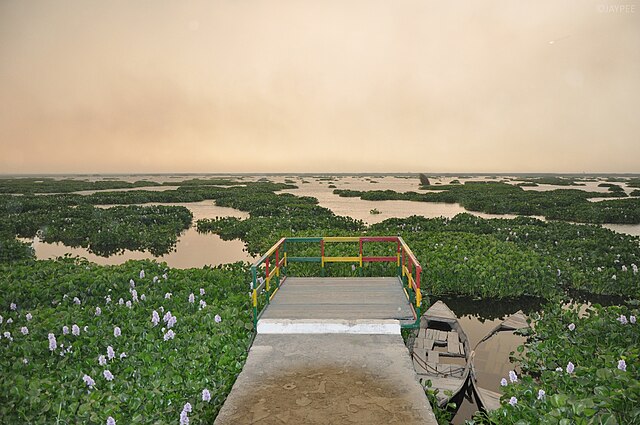The Ramsar Convention on Wetlands of International Importance Especially as Waterfowl Habitat is an international treaty for the conservation and sustainable use of Ramsar sites (wetlands). It is also known as the Convention on Wetlands. It is named after the city of Ramsar in Iran, where the convention was signed in 1971.
The Upper Navua Conservation Area Ramsar site in Fiji
Sustainable fishing in India, an example of wise use.
Archipel Bolama-Bijagos Ramsar site in Guinea-Bissau
The Wadden Sea is a transboundary Ramsar site in Denmark, Germany and the Netherlands
A Ramsar site is a wetland site designated to be of international importance under the Ramsar Convention, also known as "The Convention on Wetlands", an international environmental treaty signed on 2 February 1971 in Ramsar, Iran, under the auspices of UNESCO. It came into force on 21 December 1975, when it was ratified by a sufficient number of nations. It provides for national action and international cooperation regarding the conservation of wetlands, and wise sustainable use of their resources. Ramsar identifies wetlands of international importance, especially those providing waterfowl habitat.
Harike Wetland is a Ramsar site in India
Archipel Bolama-Bijagos Ramsar site in Guinea-Bissau
Walkway in Zuvintas Biosphere Reserve






